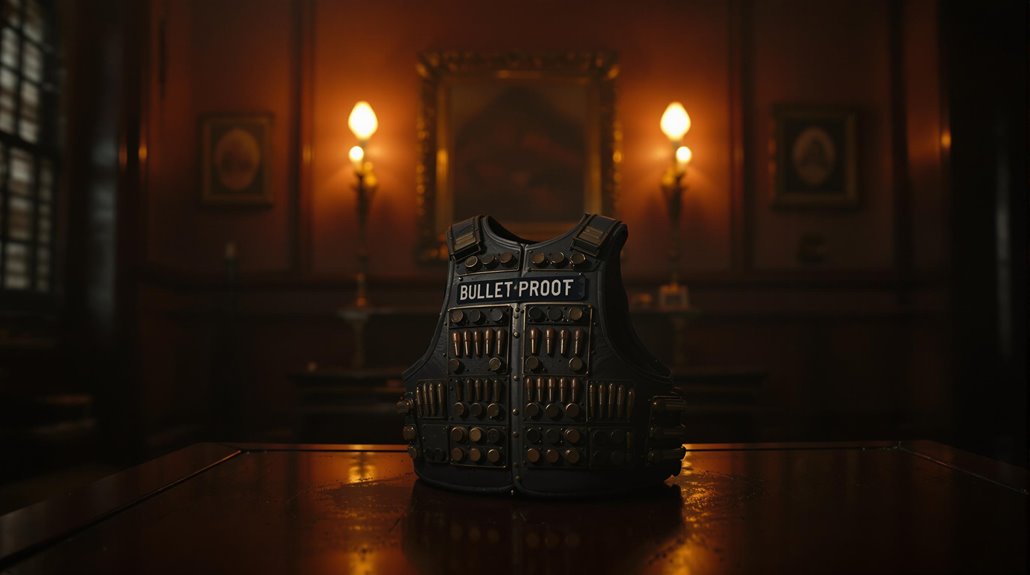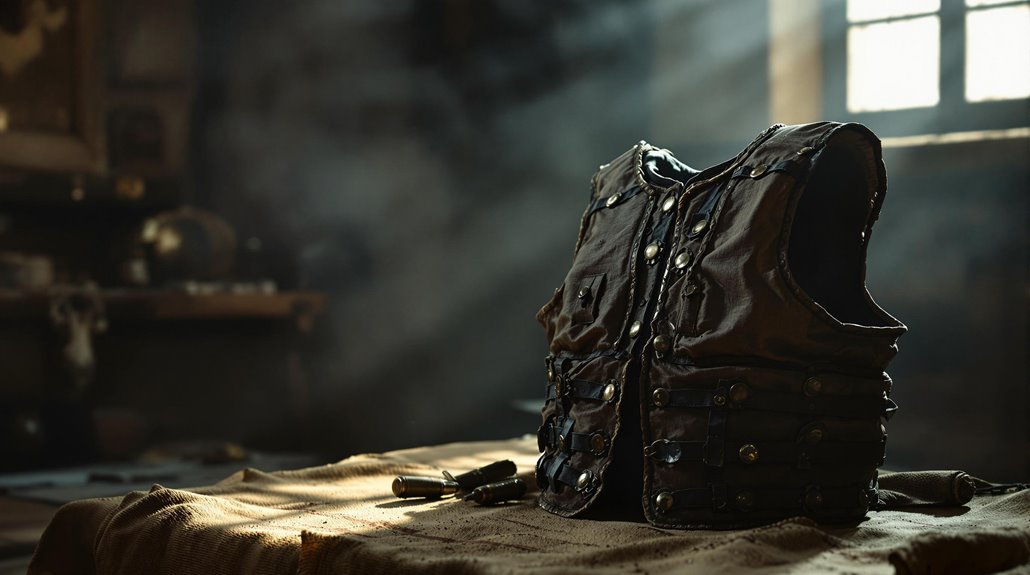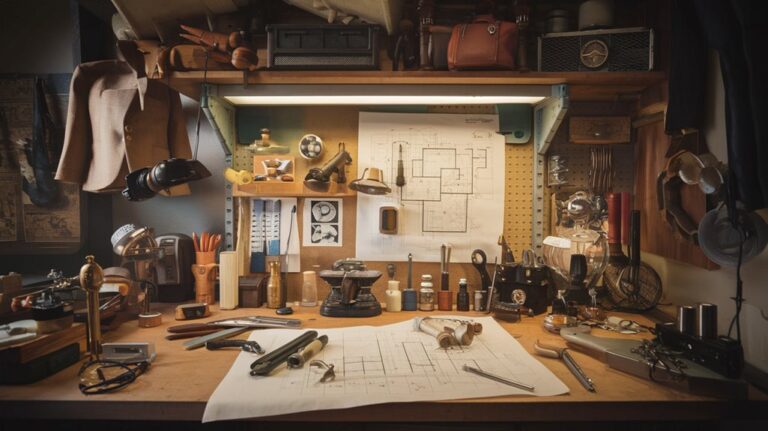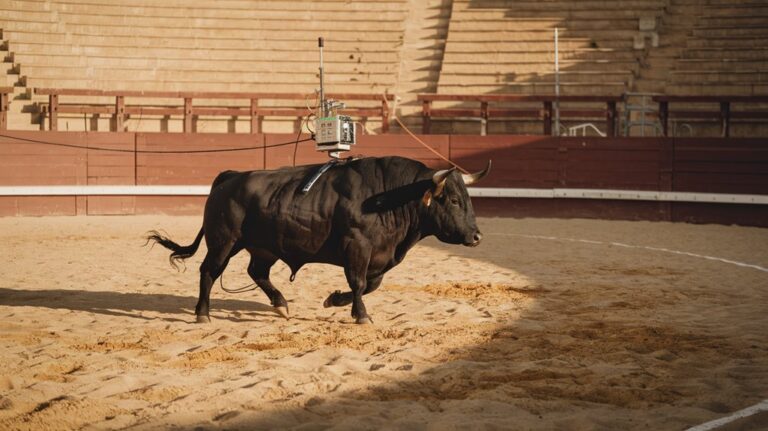Bulletproof Vests: Hollywood Myths vs. Reality
Like a warrior's shield in modern times, a bulletproof vest stands between life and death for countless law enforcement officers and military personnel. You've probably seen action heroes bounce back instantly after taking multiple rifle shots to the chest, but that's not how body armor actually works. If you're counting on Hollywood to teach you about ballistic protection, you're in for some surprising revelations about what these life-saving vests can and can't do in real-world situations.
The Science Behind Ballistic Protection
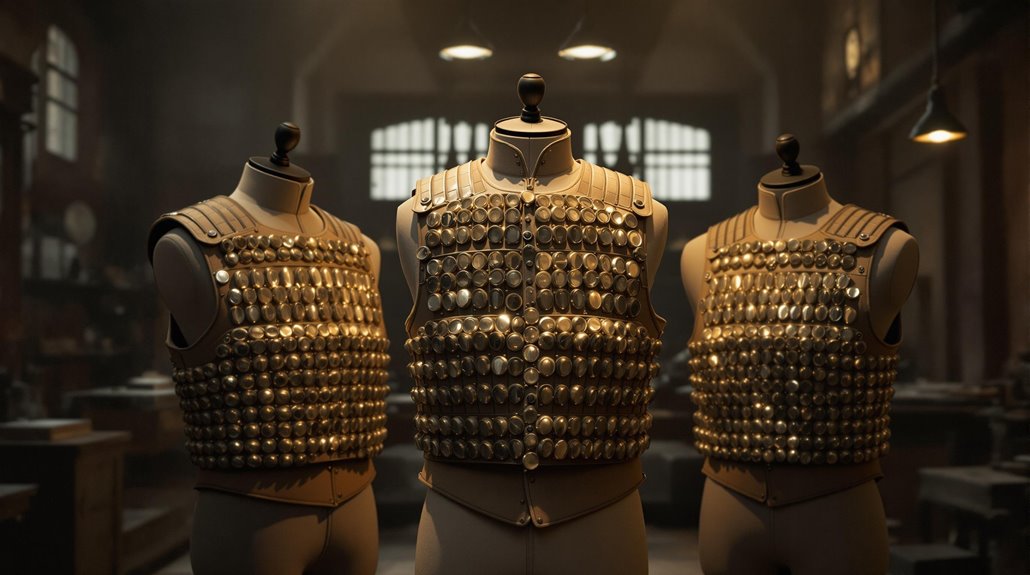
Impact is the fundamental principle behind bulletproof vest technology. When a bullet strikes the vest, the protective materials work together to absorb and distribute the massive energy across a wider surface area.
You'll find that modern vests use multiple layers of advanced materials like Kevlar, Dyneema, or Spectra Shield to achieve this effect. The outer shell layer helps protect the internal components from environmental damage and wear.
Think of it like catching a baseball – your glove cushions and spreads out the impact force so your hand doesn't feel the full blow. That's exactly what happens in a bulletproof vest, but at a much more intense level.
The vest's layers deform and work together to dissipate energy, while trauma plates provide additional protection against blunt force. Studies of terminal ballistics help manufacturers optimize vest designs for maximum protection.
Recent advances in materials like shear-thickening fluids and graphene are making vests even more effective at energy distribution.
Common Media Misconceptions Exposed
While Hollywood has shaped public perception of bulletproof vests, many of these depictions stray far from reality. Media portrayals often show characters surviving rifle shots while wearing basic soft armor, but these vests only protect against specific handgun rounds. Modern tests show that soft armor degrades significantly with UV light exposure and moisture contact.
According to the NIJ rating system, soft armor protection ranges from Level I to Level IV, with each level designed for specific ballistic threats.
You'll rarely see the truth about armor degradation after impacts or the limits of protection against explosions.
Character survival scenes frequently exaggerate the knockdown effect, showing people dramatically falling unconscious when shot in armored areas. In reality, you might experience pain, but you'll likely stay conscious and on your feet.
Films also mislead viewers about concealment, depicting vests as easily hidden under clothing. The truth is that body armor, especially rigid plates, is bulky, restrictive, and challenging to conceal beneath everyday attire.
Real-World Impact and Injury Risks
Beyond Hollywood's dramatizations, real-world data reveals the true effectiveness of body armor in saving lives. In real life scenarios, bulletproof vests have protected over 3,100 police officers and reduced fatality risks by 76%. The development of multiple silk layers by Casimir Zeglen in 1893 laid the groundwork for modern protective vests.
While they're highly effective against handguns, they don't make you invincible. Hard armor plates are required to stop high-powered rifle rounds. When a bullet hits your vest, you'll experience significant blunt force trauma – similar to being struck with a hammer. Unlike movie portrayals, you won't lose consciousness, but you may get the wind knocked out of you.
Injury statistics show that shots to crucial areas like the liver or kidneys can temporarily incapacitate you. To maintain ideal protection, you'll need to evaluate factors like proper fit, regular maintenance, and the vest's age, which can reduce performance by 10% over time.
Understanding Armor Classifications
Understanding today's body armor requires familiarity with standardized protection levels established by the National Institute of Justice (NIJ).
You'll find five main protection levels: IIA, II, IIIA, III, and IV, each designed for specific threats. Soft armor types range from Level IIA, stopping basic handgun rounds, to Level IIIA, which protects against more powerful handguns like .44 Magnum. Levels IIA through IIIA use soft Kevlar materials for protection.
When you need rifle protection, you'll need hard armor plates rated at Level III or IV. Level IV plates have 20mm thickness to protect against high-powered rifle threats.
Don't confuse ballistic protection levels with stab and spike ratings, which follow different standards. While you might hear terms like "Level III+," these aren't official NIJ classifications.
Remember that higher protection levels typically mean more weight and bulk, and all armor types have limitations – there's no such thing as completely bulletproof protection.
Materials and Construction Methods
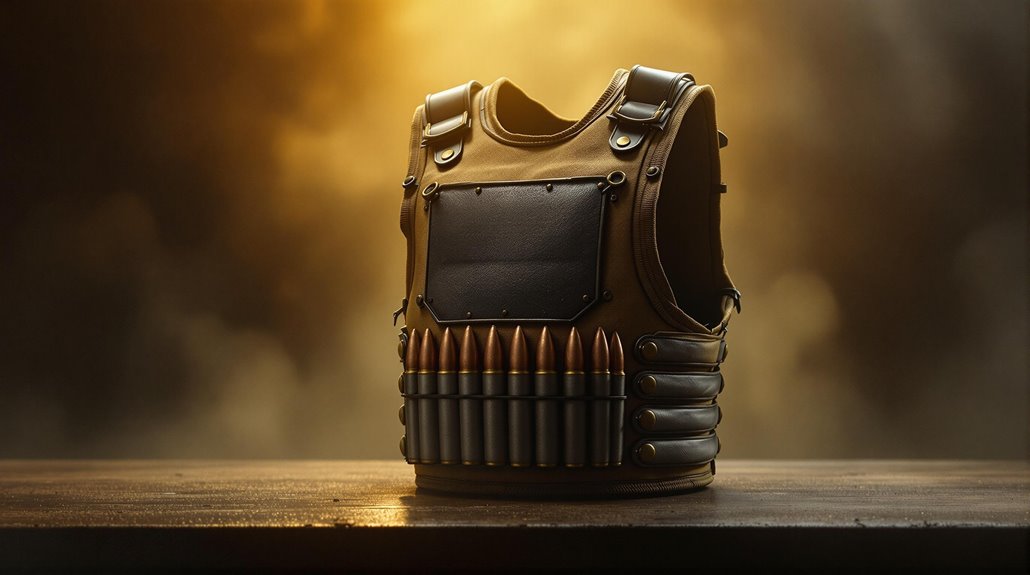
The effectiveness of modern body armor comes from its advanced materials and precise construction techniques. You'll find that manufacturers use multiple layers of high-performance materials like Kevlar, Dyneema, and Twaron, carefully sewn together to create a protective barrier.
Each layer contributes to the vest's material durability and stopping power. Modern vests using high-tensile strength fibers provide exceptional protection while maintaining a comfortable weight. These protective layers are typically sewn with Kevlar thread for maximum integrity.
Construction techniques have evolved considerably, incorporating unidirectional fiber layering and strategic placement of trauma plates. The outer shell typically features abrasion-resistant nylon, while the inner lining wicks away moisture for comfort.
Today's innovations include experimental materials like graphene and liquid armor, which could revolutionize future vest designs. The combination of fiber density, layer count, and weave patterns all work together to determine how well your vest will perform in real-world situations.
Practical Limitations and User Guidelines
Despite their essential protective capabilities, bulletproof vests come with three significant practical limitations users must understand.
Regular plate carrier adjustments help optimize protection coverage and mobility during tactical operations. First, you'll face challenges with user comfort and weight distribution, as the armor's bulk restricts movement and causes fatigue during extended wear. According to established standards, NIJ classification levels determine the protection rating and corresponding weight of each vest.
Second, environmental factors can compromise your vest's effectiveness – high temperatures degrade UHMWPE materials, while moisture exposure weakens Kevlar fibers.
Third, proper maintenance is vital for peak protection, requiring regular inspections and careful storage.
You must replace your vest immediately if it's impacted by a bullet or damaged, and always seek medical attention after any impact.
For maximum protection, verify your vest matches potential threats and your service weapon.

